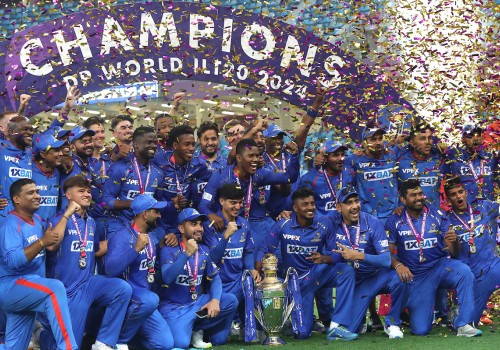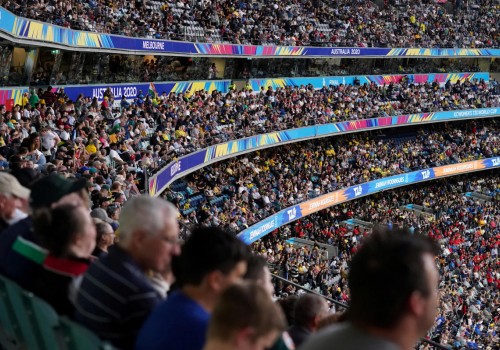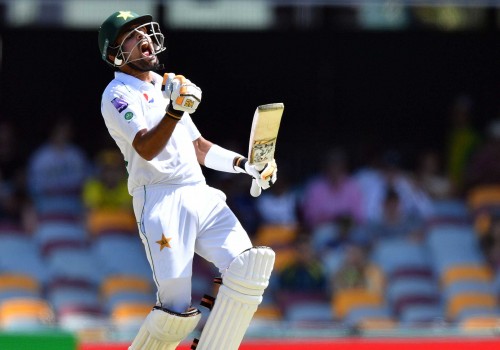South Africa ring the personnel changes against Sri Lanka
South Africa’s coach Ottis Gibson has intimated that there will be multiple personnel changes in the team to play the Twenty20 International series against Sri Lanka. It is the Proteas’ intention to trial new players en route for the ICC Cricket World Cup 2019, as a component of Cricket South Africa’s Vision 2019.
Speaking on the eve of the first T20I on Tuesday, 19th March, Gibson was at pains to explain that the senior squad members, who played a prominent part in South Africa’s sweeping 5-0 victory the ODI series, would be rested in favour of some of the less experienced younger players.
“The first thing is that some of the guys are going to be given a break,” Gibson confirmed to the assembled press.
“Lungi [Ngidi] picked up a slight niggle in the last game. I don’t think it’s too serious, but he’s going to be given a break.
“After this first game, KG [Kagiso Rabada] is going to be given a break, and Faf [du Plessis] and Quinton [de Kock] as well, who play all formats. We’ve brought in [Lutho] Sipamla. We’ve looked at him in the Pakistan series; he looks a really good prospect. So we’re going to try and give him some more game time.”
Gibson went on elaborate on the approach:
“We’ve always used the T20s as an opportunity to expose new talent, and that’s what we’re going to continue to do with Sipamla and [Sinethemba] Qeshile. Hopefully, the guys that are left here, there’s still an opportunity for them to get some form.”
South Africa also followed a similar pattern in the ODI matches, taking the opportunity to try out some of their newer players, and certainly some of those swap-outs paid dividends. For instance, debutant Anrich Nortje, who was selected to play instead of Dale Steyn in four out of the five ODIs, impressed mightily by taking eight wickets at a rate of 18.75 seen by many pundits as one of the standout performers in the series.
Gibson was glowing in his enthusiasm for the tactical outcome this particular interchange in terms of expanding options:
“One of the things that we’ve always looked at when we’re putting together a bowling unit is guys who can get wickets in the middle overs. Him bowling first change with his pace in those middle overs, he is surely a wicket-taker.”
Gibson further reinforced his view that form would be the primary criteria for World Cup selection, but his coaching savvy acknowledged that South Africa might have to bank on reputation and the usual suspects as a plan B were an insufficient number of the new faces step up and perform.
Coach Gibson gave more than a hint that this would be the attitude adopted with regard to Hashim Amla’s selection when he next makes himself available. Amla who hasn’t played any international cricket for several weeks now, gave up his place in the T20Is against Sri Lanka to be beside his seriously unwell father.
“First and foremost, you want to pick on form,” Gibson reflected.
“[However] If there’s no form to go with, then you have to look at reputation I guess. That’s something that we’ll have to look at.
“With regards to Hash, he’s not played any cricket for a long time now because of his family situation. So when we sit down to discuss the team that will surely be one of the things we have to consider.”
Looking at matters from a shaky Sri Lanka’s point of view, at least there was one less burden to carry in terms of not having to deal with Lungi Ngidi, who had caused them so many problems with his eight ODI match wickets.
However, Rassie van der Dussen has looked dangerously comfortable in the middle order, where he notched up a fifty and finished off successful chases. This season, a fluid but flexible South Africa have trialled eight new players in total between the two limited-overs formats.
In terms of the pick so far: For instance David Miller has been has been introduced as a wicketkeeper, potentially as back-up for Quinton de Kock. Then both right-arm fast bowler Lutho Sipamla and batsman Sinethemba Qeshile have joined him, evidencing the merits of a successful transition through trialling and in Miller’s case the metamorphosis from an occasional wicketkeeper at college. This is aside from Rassie van der Dussen and Anrich Nortje of course.
Carrying on with his assessment of progress, Gibson observed:
“The one-day series gave us a good look at some players,” Gibson said. “Obviously, the result is quite pleasing going into the World Cup. We saw Nortje come in and do really well. We’ve seen Rassie now for a while. We would have liked some more performances from other players. The likes of Reeza, I’m, sure would have liked to have made some more runs.
“He’s [Nortje] come in and done quite well. He’ll surely be in the conversation at the moment. Even yesterday, in the last game of the series, he bowled really well. And he complements the other bowlers.”
On the face of it, the Proteas policy of full-on exposure of promising rookies to competitive international cricket appears to have developed a significant depth of capability within what is now a South African ICC Cricket World Cup squad intelligently enriched with new young talent. Certainly they have all the hallmarks of a substantial cricketing force to be reckoned with as the tournament approaches.
Expat Sport’s Mac McTiernan takes a look at the revolving door of talented new blood intermingling freely with South Africa’s veteran hardcore of internationally respected cricketers as the Proteas squad readies itself to take part in the World Cup in England and Wales.




